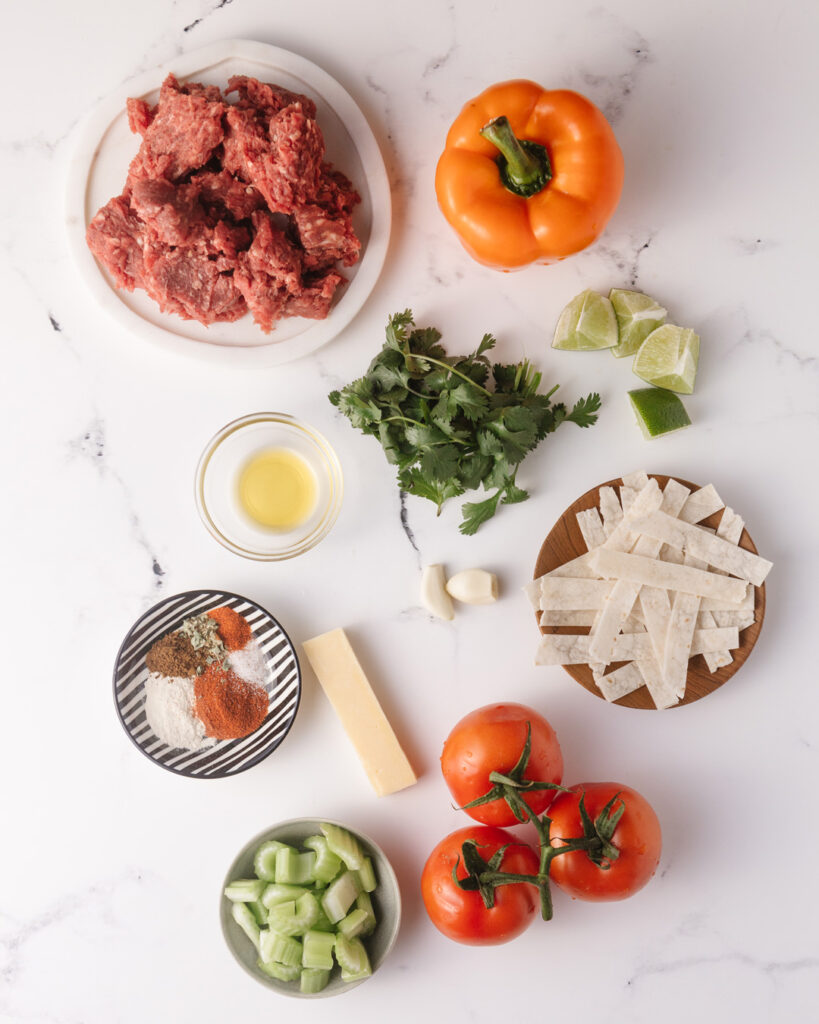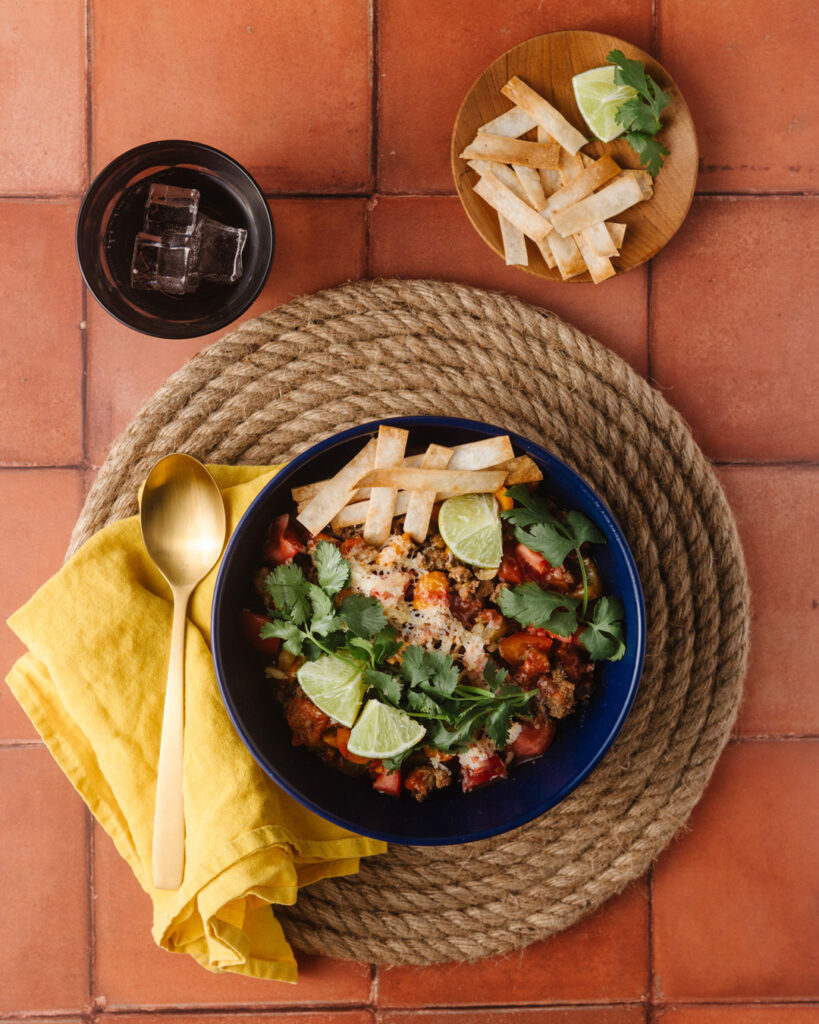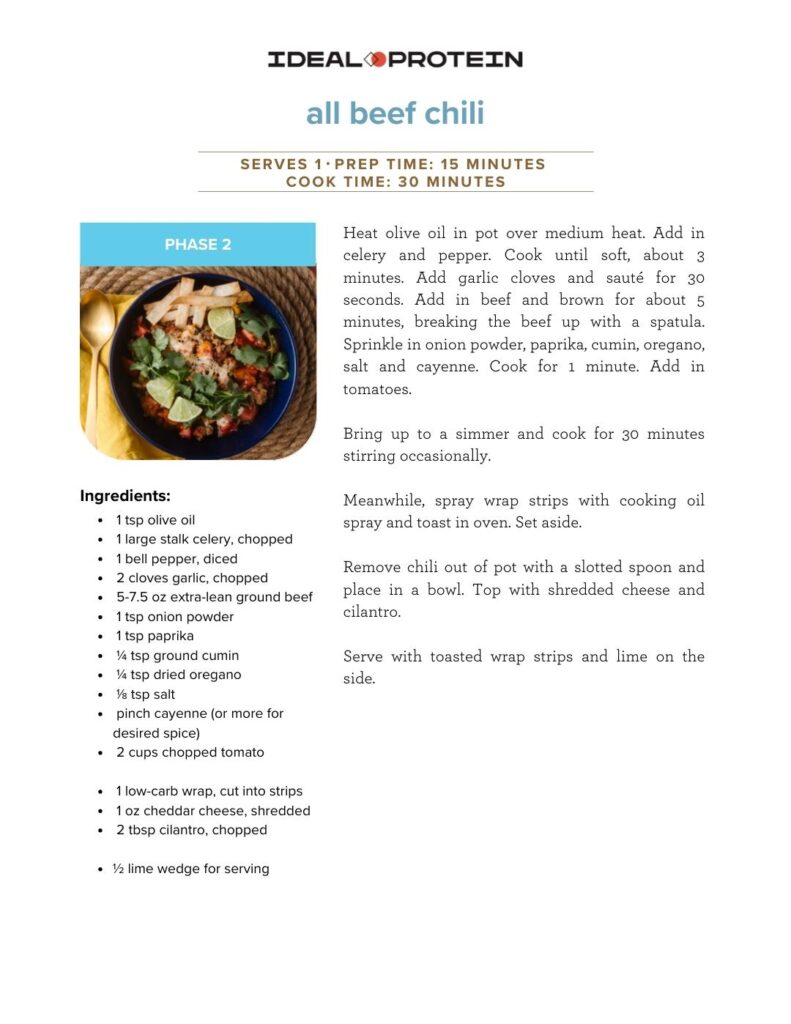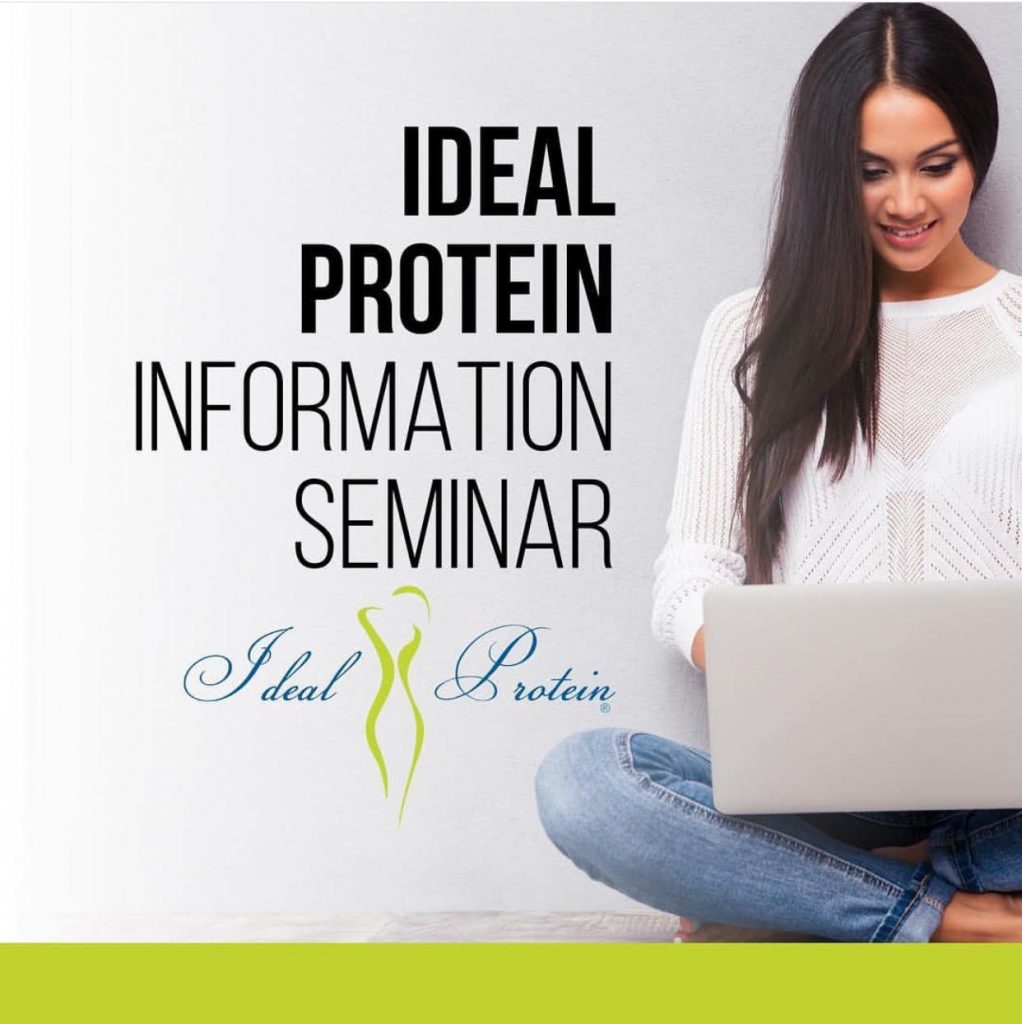



Food fuels our bodies in ways that allow us to be our best self.
Our science + Our products = Amazing!



To make your IP experience even easier…
START delivery when the need arises!!!
SELECT your products with your APP!!!
STOP delivery anytime!!!
FREE!!! (restrictions apply)
HOW IT WORKS
Receive your IP orders to either your address (home or business) or one of our remote offices.
WHAT TO DO
See Dr Alan.
Sign up today.
Start delivery anytime.
According to a study conducted and published by Aspirus, an eight-hospital health system in Wisconsin and Michigan, entitled Effect of the Ideal Protein Weight Loss Method on Weight Loss and Metabolic Parameters,¹ 233 patients completed at least 12 weeks of the Protocol. The 12-week results were presented at the Cleveland Clinic’s 9th Annual Obesity Summit and at the Annual Scientific Meeting of the National Obesity Society.
This peer-reviewed, published research demonstrates that, among patients who completed the study, metabolic health can be improved in as little as 12 weeks REDUCTIONS were measured:
* Total Body Weight -3.5lbs/wk for men and -2.4lbs./wk for women
Study Concludes: The Ideal Protein Protocol produces improvements in blood pressure, lipid profile, particularly in regard to triglyceride levels and fasting glucose levels. The findings suggest that due to the successful weight loss reported, the Protocol could help with cardiovascular risk.
¹Effect of the Ideal Protein Weight Loss Method on Weight Loss and Metabolic Parameters By: Timothy Logemann, MD; David K. Murdock, MD, MS; Kelly O’Heron, RD & Adam Hoffmann
The science on healthy weight-loss & weight-maintenance is crystal clear: For most individuals, partial meal replacements (PMRs) are the most effective, efficient and healthy way to support these goals.
And among the various PMRs in the marketplace, many people have come to the conclusion that Ideal Protein PMRs are the tastiest and healthiest option available.
I have personally witnessed the evolution of the taste, crunchiness, sense of fullness and effectiveness of the Ideal Protein meal replacement products and their weight-loss protocol over the past 10 plus years.
Currently my daily go-to Ideal Protein PMRs are teh Sweet Chili Dorados as well as the Salted Caramel Chocolate Clusters. Honestly these nearly totally satisfy my cravings for crunch, spicy as well as sweet foods.
Each day I combine these PMRs with the remainder of an amazing array of healthy whole foods with the result of great weight-maintenance and health.
Reach out to us today and ask to attend our Ideal Protein information seminar, led by one of our licensed health care providers, so you too can see how these methods might work for you and your family!

Here with Dr. Alan and Chef Roni, learning to plan, shop, and prepare delicious healthy dishes starts Day One on our protocol!
Planning what you’ll eat in advance and cooking at home are skills that will help you both reach your weight loss goal and maintain your new weight. During Phase 1 of the Ideal Protein protocol, your meal planning will be made easier because many of your meals and snacks will be based around Ideal Protein foods. Even so, if you sit down for a few minutes and plan out your meals and snacks in advance, it will be easier for you to stay on protocol.
Benefits of meal planning
Successful meal planning doesn’t have to be time-consuming, and it offers many benefits, including:
Meal planning made easier
Many people plan enough meals for a week at a time, but if that seems overwhelming, start by planning two dinners and go from there. Hint: if you double the recipes for each meal, you’ve just planned four dinners! And remember, you can always review your meal plan with your Ideal Protein coach if you are unsure about anything.
Once your meal plan is finalized, make a grocery list and stick to it. Organize your list by store section. If you’re pressed for time, many grocery stores stock pre-chopped or spiralized vegetables, individually prepared salads, fruits, and so on. And remember frozen vegetables are often just as nutritious as fresh ones. Just be sure to avoid packages containing fat-filled sauces.
Meal planning will help you continue to make changes to your eating habits, and become more aware of smart food choices. Taking the time to plan your meals each week is one positive way to support your weight loss and take control of your health. (We’ll have more articles about meal prepping in upcoming weeks—stay tuned!)
Have any questions or feedback?
Email us at dralanandchefroni@idealww.com

Anyone who has had a poor night’s sleep can tell you how it impacts their productivity the next day. Feeling sluggish, dull, and not at one’s best are all hallmarks of a lack of sleep. Now add on the increased stress levels of a global pandemic and you may find yourself feeling extra groggy in
the morning.
But what are the impacts of sleep deprivation outside of how we feel the next day? Not getting enough shuteye is being tied to serious consequences for both general health and weight loss.
People who don’t get enough sleep:
1. Suffer from increased hunger and appetite
2. Have impaired impulse control
3. Consume more food, especially high calorie foods, than the well-rested
4. Feel decreased satisfaction after eating
5. Experience decreased effectiveness of weight loss when dieting
How much sleep is enough?
Most people need between seven and nine hours of sleep per night.
Why is sleep so important?
Among other things, adequate sleep fine tunes the balance of insulin and glucose, regulates our appetites, and helps our brains make the right choices about what to eat rather than impulsively gobbling down sweets.
Key appetite-controlling hormones leptin and ghrelin, which signal feelings of fullness and hunger respectively, are affected by lack of sleep. This can make you feel hungry, even if you are eating the right amount of food.
If you have trouble sleeping, here are a few tips to help you get a good night’s rest:
1. This may feel difficult if you are isolating at home but try to go to bed and wake up at the same time each day, even on the weekends.
2. When you exercise, make sure there are at least two to three hours before your bedtime.
3. Avoid caffeine and nicotine. Both are stimulants and can make it hard to fall asleep or stay asleep.
4. Avoid large meals and beverages near bedtime.
5. Don’t nap after 3 p.m.
6. Allow time for relaxing before bed. Take a hot bath, read, or listen to music.
7. Practice good “sleep hygiene”: keep your bedroom dark, quiet, and cool.
8. For a couple of hours before bed, avoid using devices, such as phones, computers, and tablets, that emit blue light. Blue light has been shown to disrupt sleep by suppressing the sleep-inducing hormone melatonin.
Why is sleep so important?
Among other things, adequate sleep fine tunes the balance of insulin and glucose, regulates our appetites, and helps our brains make the right choices about what to eat rather than impulsively gobbling down sweets.
Key appetite-controlling hormones leptin and ghrelin, which signal feelings of fullness and hunger respectively, are affected by lack of sleep. This can make you feel hungry, even if you are eating the right amount of food.
Coupled with healthier eating habits, physical activity and a structured approach, a good night’s sleep is a key part of a healthy weight loss journey. Try getting enough Z’s this week, and see how it affects your productivity, your appetite, and your general health.
You may have heard the saying, “The pen is mightier than the sword.” Well, here’s another saying for you: “The pen is mightier than the pounds.”
What does that mean? It means, if you want to lose weight, one simple tool can help you reach your goal: keeping a food journal. In fact, one study from Kaiser Permanente’s Center for Health Research in Portland, Oregon found that participants’ weight loss almost doubled when they wrote in a food journal.
You may have resisted keeping a food journal in the past because it sounded too time-consuming or complicated. With COVID-19 concerns keeping you closer to home, this just might be the time to give it a try. Plus, it’s super easy to record your Ideal Protein Phase 1 meals, snacks, and drinks—all the information you need is right on the labels, and servings are measured out for you.
Food journaling 101
Getting started with journaling is easy. Choose a journal format, either paper or electronic, and start writing down everything you eat and drink, including all meals, snacks, and beverages—even water. For greater accuracy, write it down immediately after you eat rather than waiting till the end of the day.
What type of journal should you choose? Whichever one you’ll use! If you choose a paper version, make it small enough to be portable. If you prefer an electronic version, there are plenty of websites and apps to choose from, but we recommend using the Ideal Protein app!
Once you’ve selected your preferred format, here are some more tips to get you going:
Going deeper
Your food journal can simply be a place where you log your food and drinks, but it can also be a place to go deeper. Here are some additional things you can add to your food journal:
Keeping a food journal and writing about your emotions and experiences as you lose weight will keep you aware and accountable. You’ll also have a record of your weight loss journey. So when a situation or emotion triggers your desire to eat unhealthfully, reach for your pen rather than a cookie—you’ll feel better in the long run!
While losing weight is a personal and private goal for many people, you don’t have to do it alone. In fact, a good weight loss support system may be the difference between the success or failure of your weight loss goals. Even with the current challenges of sheltering in place and social distancing measures due to COVID-19, you can still create and connect with a support system.
One-on-one coaching and support is the secret sauce of the Ideal Protein Weight Loss Protocol. Your coach is there for you during your entire weight loss journey. Ideal Protein Coaches have all completed the Protocol and are well equipped to give you guidance and support you need along the way. Your coach should be your first level of support, but you may find you need additional support. Here are some tips on how to set up your support system:
Think about what types of support you want and what form this support system should take to best meet your needs. For instance, you will likely need emotional support, someone to listen to you and encourage you—not just about weight loss but about any issues you’re struggling with. Someone you can turn to soothe your emotions, someone who can encourage you and celebrate your successes.
You may also need practical support—an accountability partner. This may be someone to keep a regular walking date with or someone to swap recipes or share eating strategies with.
What about inspirational support? Having someone you admire and look up to can also be motivating when you’re striving to reach goals. Who inspires you to work hard, do your best, and reach higher? You don’t even have to know your inspirations personally—that’s where the Internet, books, or videos can help.
Another thing to consider is the emotional tone the support should take. Are you looking for encouragement, accountability or both? What type of motivation do you respond best to?
Some people do best if they announce their weight loss intentions to the world, while others need only to set a weight loss goal for themselves privately. Be honest about what you need with both yourself and your support system.
Right now, your opportunities for in-person support may be limited by public health safety measures, but even if you can’t be together, you can still find support by phone, text, and online. And continue to reach out to your Ideal Protein coach at Ideal Weight & Wellness for in-person, socially distanced one-on-one coaching or virtual coaching!
No matter what type of support you need you can find it online or in real life. Lean on your support system when losing weight feels hard, and celebrate with them when you meet your weight loss goals. You’ve got this!
Have any questions or feedback?
Call us at 253-848-3300
You stepped onto your bathroom scale and did a double take when you saw the numbers had moved up. You thought you were doing everything right. You have made changes in your lifestyle, right-sized your eating, started exercising regularly and even asked for help from your support system when you needed it. Yet, you gained weight. And you don’t understand why!
Here’s one possibility: Somewhere along the way you fell victim to a “trigger.”
What is a trigger? It’s simple: A trigger is any kind of stimulus that we can have a reaction to. Triggers can be sights, smells, sounds, locations, stressful situations—even people—that break down our resistance and cause us to eat things that sabotage our weight loss efforts.
It shouldn’t surprise us that we’re feeling triggered right now. After all, we’re all facing one of the most stressful situations of our lives as we cope with the COVID-19 pandemic and all the personal and societal upheaval it’s causing. Maybe we’re working at home, where food is within easy reach at all times, or we’re tired of cooking for ourselves and are tempted to order food take-out or delivery.
Because triggers are specific for each individual, they can be difficult to recognize, but here are some examples of things that can trigger someone into overeating and gaining weight.We can be influenced by our surroundings. The enticing smell of cookies can lure us into a bakery, or even into our own kitchen if a family member is baking, and, usually, when we walk out those cookies leave with us.Distracted eating. Sometimes we’re triggered simply because we’re not paying attention to what we’re eating. For example, we check emails while snacking on some crackers. When we’re finished, so are the crackers.
We are surrounded by opportunities to eat. Not only are they where you’d expect—like fast food restaurants—but they are not always in traditional places where food would be expected, like those vending machines in hospital waiting rooms, gas station mini-marts with their displays of candy and coolers of soft drinks, or that box of donuts a family member brought home. As we begin to leave the shelter of our homes, we’ll once more be facing these kinds of triggers.
The most important thing is to become more aware of what causes our triggers and to change our behavior so that we aren’t vulnerable to the temptations. For those triggers that are unavoidable or particularly tempting, the key is to have a game plan in place to deal with them—techniques such as visualization (picturing yourself achieving your weight loss objective) and thought-stopping (thinking something positive, like how proud you were when you started losing weight) can keep triggers at bay until the urge to overeat passes.
We can also remember to share our particular challenges with our Coach for support and guidance. With so many opportunities to encounter triggers, it’s not difficult to see how the numbers on our scales can move up. Teaching ourselves how to recognize and avoid our triggers will help us continue to make smarter decisions to reach our weight loss goals!
Dr. Alan & Chef Roni
If you’re trying to lose weight or maintain weight loss, one of the most important things you can do is prepare most of your meals at home. Home-cooked meals generally contain more nutrients and fewer unhealthy ingredients that might derail your weight-loss plan. Since much of society is shut down due to the coronavirus pandemic, you’re probably already making most of your own meals, so why not take this opportunity to teach your kids the basics of cooking?
Cooking with your kids is a great way to spend time together as a family, and helps you share your love of healthy, tasty foods. Kids are more likely to eat and enjoy a wide range of foods when they help to prepare them, and learning how to plan, shop for, and cook meals is an important life skill. Reading recipes and measuring ingredients also reinforces the reading and math skills they’re learning in school (or from you at home)!
It may seem daunting to add kids to the cooking mix, but it doesn’t have to be. Start slow, start small, and have fun! Here are a few tips to help make cooking with kids a recipe for fun for everyone:
Consider the ages & maturity levels of your kids
Before your first kitchen session with your kids, think about their ages, maturity, and likes and dislikes. You want their first experiences in the kitchen to be safe and fun.
Choose tasks for your kids that are age and developmentally appropriate. For example, even toddlers can rinse vegetables, while older kids can measure ingredients, grate cheese, open cans using a can opener, and perform other duties. As they get older and more skilled, they’ll be capable of more complex tasks—maybe even cooking an entire dinner for the family now and then!
Let them pick!
Let your kids choose a recipe from a few healthy ones you’ve pre-selected. Younger cooks will be happier with simpler recipes that use only a few ingredients.
Choose family cooking time wisely
Even though the whole family is likely spending more time at home, you still want to take into account everyone’s energy levels and emotional states. Trying to encourage a grumpy kid to join you for a cooking session probably won’t work. Younger children especially will also do better if they’re not too tired or hungry. (You probably will, too!)
Keep it light
Maintain a light mood, and don’t get upset if an oops occurs. Learning to cook is a process and mistakes will happen.
Encourage conversation
Talk about what makes a food or a meal good for you in kid-friendly language. You might talk about “eating a rainbow” of fruits and vegetables, for example. Encourage them to ask questions, and if you don’t know the answers, look them up together.
Include clean-up tasks
Remember to include clean-up tasks—washing, drying, and putting away dishes, putting away ingredients, and cleaning up their own work areas. These are all a part of learning to cook.
Don’t leave children unsupervised
Don’t leave children unsupervised in the kitchen, and keep them a safe distance from sharp knives and hot surfaces until you’ve determined they’re mature enough to handle them. You may even want to set up a kid-safe cooking station where your little chefs can stir and pour safely to their hearts’ content.
Some won’t enjoy it—that’s OK
Some kids just won’t enjoy cooking, and that’s OK too. Don’t force them. You can still include them in the mealtime process by having them set and clear the table, wash produce, or taste test recipes as you cook.
Pursue your shared passion
If you find you and your kids do love cooking together you can take it farther by searching for online cooking tutorials to watch together. And once things begin to open up again, sign up for a parent/child cooking class. Some civic organizations as well as local businesses offer such classes—check online or in the telephone book for a class near you.